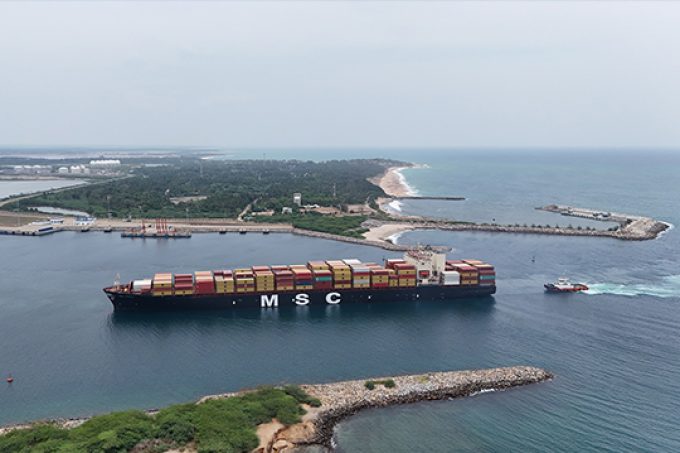MSC Aries crew set for release 'on humanitarian grounds', says Iran
The crew of the seized containership MSC Aries are reportedly set to be released after ...

Container transhipment flows out of Sri Lanka – historically concentrated at Colombo port – are set to diversify intra-country, after Hambantota International Port (HIP) began container operations.
Located some 250km south-east of Colombo, HIP – under the ownership of China Merchants Port Holdings (CMPort) – hosted a call from the 4,600 teu MSC Ingrid yesterday.
The vessel discharged some 500 teu, which sources said would be loaded on to the MSC Sky II – due to arrive at Hambantota on 16 April – for transhipment to Rotterdam.
According to the eeSea liner database, MSC Ingrid is deployed on MSC’s IAS service between the Middle East/India and West Africa, calling at Mundra and Nhava Sheva before a transhipment call at Colombo.
“With MSC’s collaborative partnership, HIP will now look at expanding our investment in equipment and other infrastructure facilities, enabling us to service larger vessels on the east-west shipping route,” said Johnson Liu, chief representative of CMPort in Sri Lanka.
“We plan to make optimal use of HIP’s strategic location, capacity and expertise, to deliver the full potential the port is capable of, doing our part to enhance Sri Lanka’s regional hub status,” he added.
Sources believe MSC intends to use Hambantota as an intermediate point for the Europe-Middle East/India trade, amid the Red Sea-linked schedule disruptions. Many major container lines, including MSC, have been connecting Gulf cargo via Colombo using feeders, with direct calls to Saudi Arabia and other terminals in the region suspended or disrupted.
Colombo has made significant gains from this rerouting flow, with volumes up 33% year on year in February. Traditionally, the port has largely thrived on Indian and Bangladeshi transhipment cargo.
Hambantota, meanwhile, was designed as a multipurpose cargo gateway, and equipped with a few container berths.
However, the project had its share of controversy, often cited as a prime example of the flaws of China’s Belt and Road initiative – the inability of the Sri Lankan government to repay loans extended by Exim Bank of China eventually culminated in China Merchants acquiring an 85% stake in Hambantota, with operating rights for 99 years. Sri Lanka Ports Authority (SLPA) holds the remaining 15%.
First-phase operations at Hambantota began in 2011, followed by the phase two roll-out in 2015. Beijing, known for its expansionist posture across the region, agreed to spend some $1.5bn on the new harbour, in stages, touted as the largest foreign direct investment into the island nation.
“We believe development has to go hand in hand with investment for enterprises to develop and grow, and we will continue to invest in the port,” Mr Liu added. “Our goal is to make HIP the best service offering in the region.”
The Chinese company also operates Colombo International Container Terminal, providing 2.4m teu capacity annually.
Colombo, meanwhile, is battling mounting congestion, due to the incremental volume buildup, according to sources. A local ship agent told The Loadstar: “Volumes have peaked dramatically in the last few months.”
And a major European carrier official in Colombo also voiced concerns over delays, adding: “The berthing situation is bad, in as much as vessels are incurring long waits to berth.”
On a broader note, MSC has terminal partnerships with India’s Adani Group at Mundra and Ennore. Given that Adani is also developing a container transhipment terminal at Colombo, expected to go live next year, and another box hub project in southern India, at Vizhinjam, with a scheduled partial start in late 2024, it remains to be seen how the Geneva-based liner’s hub strategies in the subcontinent region will play out.
The writer can be contacted at [email protected]
Comment on this article